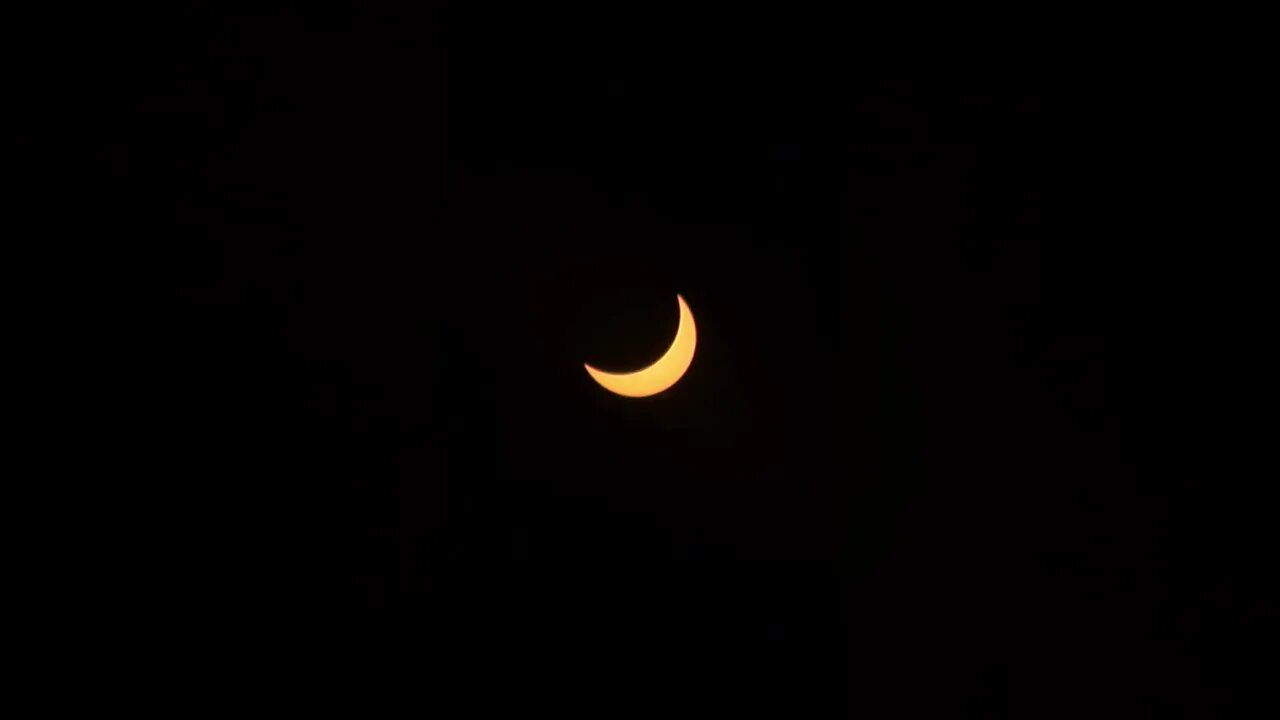Premium Only Content

Moon Plans REVENGE match June 10 for 🥊SOLAR ECLIPSE🥊(2021)!!! - Quick Science News
Some quick Science based news. I am not a journalist just a guy sharing science and tech news I find interesting.
#Shorts #Solar #Eclipse
Want to support Channel?
-----------------------------
Leaving a Tip : https://www.paypal.me/agrosquerril
Buying me a coffee : https://ko-fi.com/agrosquerrilnarrates
Becoming a Patreon : https://www.patreon.com/agrosquerrils
MERCH Store : https://teespring.com/stores/asn-3
-----Socials-----
Email : Agrosquerrils@gmail.com
Twitter : https://twitter.com/agrosquerrils
Streamlabs : https://streamlabs.com/agrosquerrils
Discord : https://discord.gg/XeMwEqX
Instagram : Agro_Squerril_Narrates
Lbry : @AgroSquerrilNarrates
--------------
What is a Solar Eclipse?
--------------------------------------
A solar eclipse occurs when a portion of the Earth is engulfed in a shadow cast by the Moon which fully or partially blocks sunlight. This occurs when the Sun, Moon and Earth are aligned. Such alignment coincides with a new moon (syzygy) indicating the Moon is closest to the ecliptic plane.[1] In a total eclipse, the disk of the Sun is fully obscured by the Moon. In partial and annular eclipses, only part of the Sun is obscured.
If the Moon were in a perfectly circular orbit, a little closer to the Earth, and in the same orbital plane, there would be total solar eclipses every new moon. However, since the Moon's orbit is tilted at more than 5 degrees to the Earth's orbit around the Sun, its shadow usually misses Earth. A solar eclipse can only occur when the Moon is close enough to the ecliptic plane during a new moon. Special conditions must occur for the two events to coincide because the Moon's orbit crosses the ecliptic at its orbital nodes twice every draconic month (27.212220 days) while a new moon occurs one every synodic month (29.53059 days). Solar (and lunar) eclipses therefore happen only during eclipse seasons resulting in at least two, and up to five, solar eclipses each year; no more than two of which can be total eclipses.[2][3]
Total eclipses are rare because the timing of the new moon within the eclipse season needs to be more exact for an alignment between the observer (on Earth) and the centers of the Sun and Moon. In addition, the elliptical orbit of the Moon often takes it far enough away from Earth that its apparent size is not large enough to block the Sun entirely. Total solar eclipses are rare at any particular location because totality exists only along a narrow path on the Earth's surface traced by the Moon's full shadow or umbra.
An eclipse is a natural phenomenon. However, in some ancient and modern cultures, solar eclipses were attributed to supernatural causes or regarded as bad omens. A total solar eclipse can be frightening to people who are unaware of its astronomical explanation, as the Sun seems to disappear during the day and the sky darkens in a matter of minutes.
Since looking directly at the Sun can lead to permanent eye damage or blindness, special eye protection or indirect viewing techniques are used when viewing a solar eclipse. It is safe to view only the total phase of a total solar eclipse with the unaided eye and without protection. This practice must be undertaken carefully, though the extreme fading of the solar brightness by a factor of over 100 times in the last minute before totality makes it obvious when totality has begun and it is for that extreme variation and the view of the solar corona that leads people to travel to the zone of totality (the partial phases span over two hours while the total phase can only last a maximum of 7.5 minutes for any one location and is usually less). People referred to as eclipse chasers or umbraphiles will travel even to remote locations to observe or witness predicted central
--------------------------------------
From Wikipedia
What is a lunar Ecplipse?
-----------------------------------
A lunar eclipse occurs when the Moon moves into the Earth's shadow.[1] This can occur only when the Sun, Earth, and Moon are exactly or very closely aligned (in syzygy) with Earth between the other two, and only on the night of a full moon. The type and length of a lunar eclipse depend on the Moon's proximity to either node of its orbit.
A totally eclipsed Moon is sometimes called a blood moon due to its reddish color, which is caused by Earth completely blocking direct sunlight from reaching the Moon. The only light reflected from the lunar surface has been refracted by Earth's atmosphere. This light appears reddish for the same reason that a sunset or sunrise does: the Rayleigh scattering of bluer light.
-----------------------------------
From Wikipedia
-
 15:11
15:11
Agro Squerril Narrates
1 year ago $0.31 earnedThe 'Cuteness' | 2256 | Humans and Humanity are OP | Best of HFY
1.48K1 -
 4:23
4:23
Blackstone Griddles
15 hours agoEasy Salmon Dinner on the Blackstone Griddle
19.4K1 -
 8:10
8:10
WhaddoYouMeme
1 day ago $0.02 earnedChristians, Before You See “Testament”, Watch this!
2.34K3 -
 8:42
8:42
Freedom Frontline
13 hours agoDurbin’s Trump Smear Video Just HUMILIATED Him in the Senate
3.62K -
 10:56
10:56
ariellescarcella
11 hours agoThe Shocking Divide Among College Voters Sparks Worry For America
2.66K5 -
 13:09
13:09
Forrest Galante
10 hours agoWildlife Expert Reacts To Deadly Australian Animal TikToks
47K4 -
 12:08
12:08
Zoufry
1 day agoThe Mystery of Gaddafi's Final 24 Hours
8.67K11 -
 18:25
18:25
Liberty Hangout
13 days agoAnti-Ice Demonstrators Love Poop!
44.4K64 -
 9:39
9:39
MattMorseTV
16 hours ago $1.05 earnedVance just DROPPED a BOMBSHELL.
40.2K63 -
 23:47
23:47
GritsGG
1 day agoThe Forgotten Best Sniper Support AR!
15.5K3